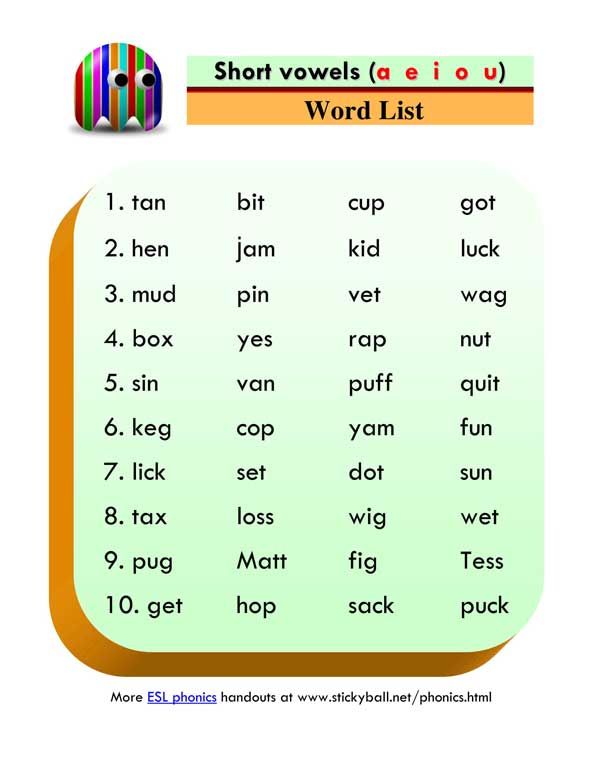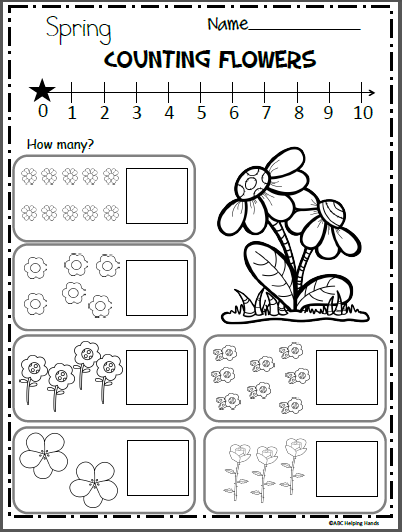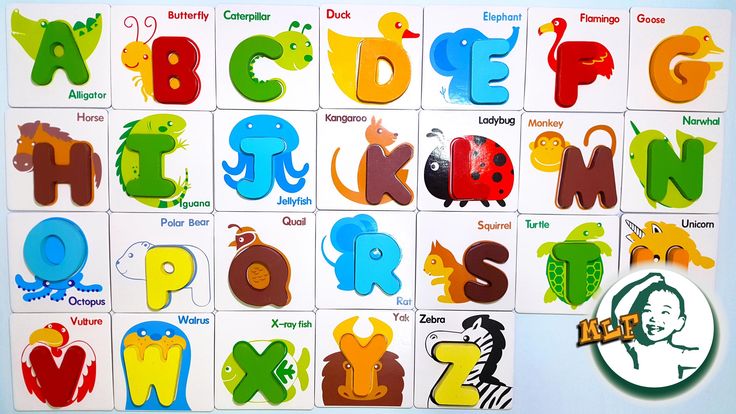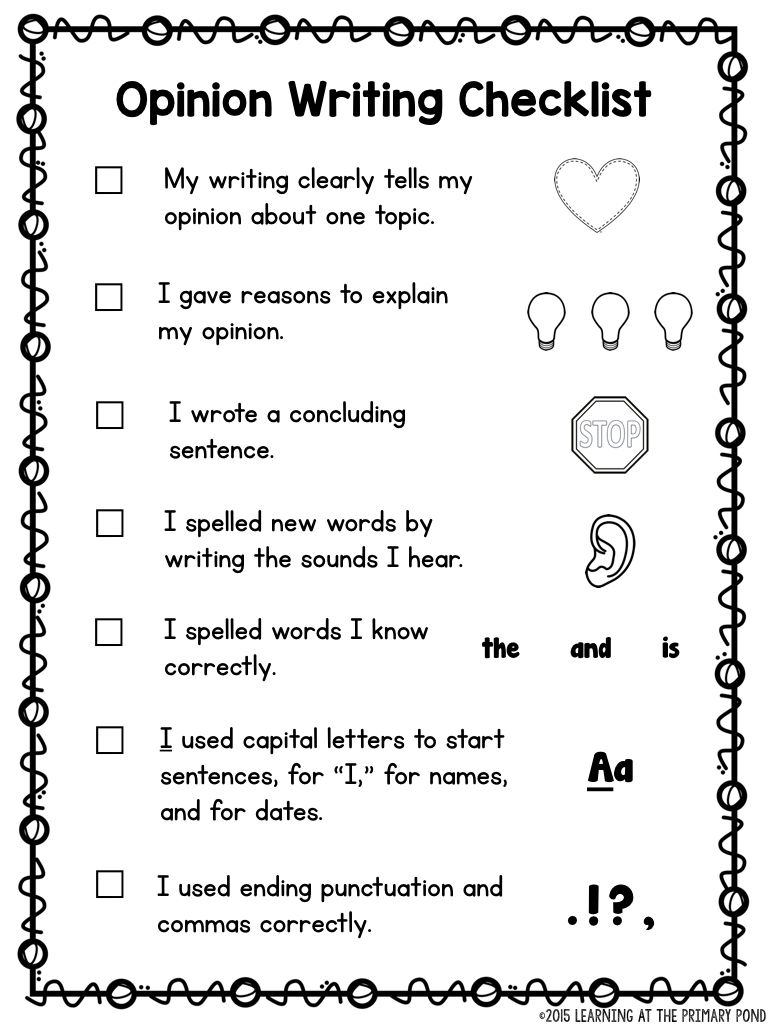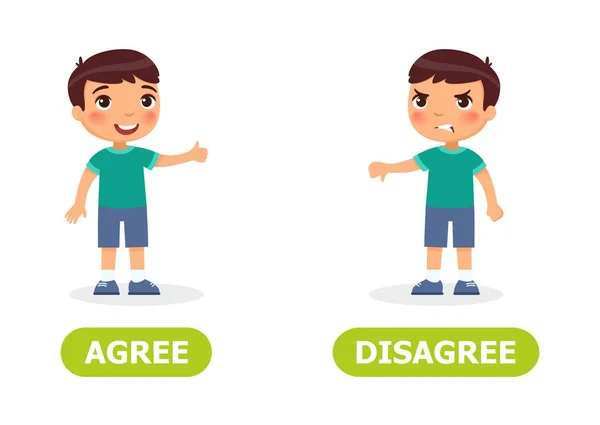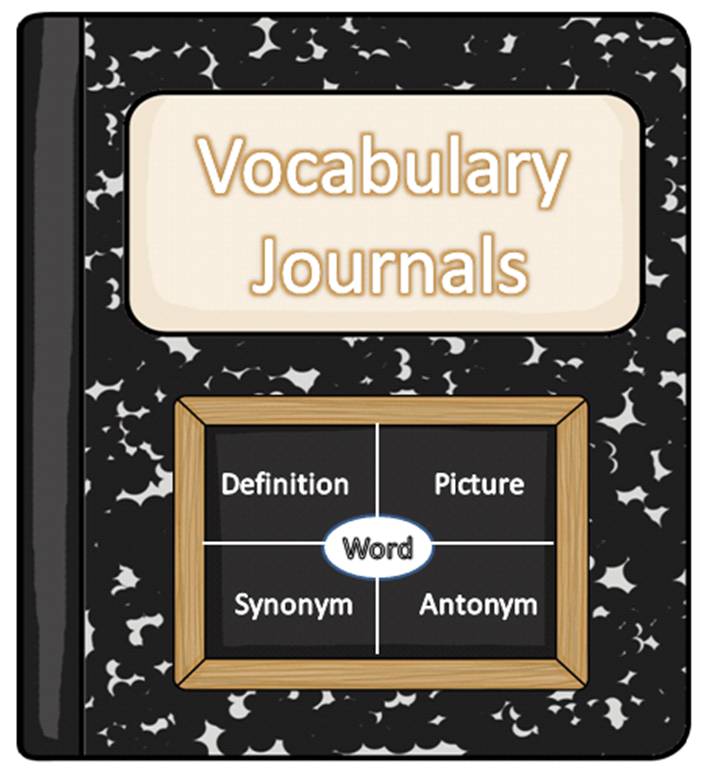Short vowel meaning
» What’s the difference between short and long vowels?
» What’s the difference between short and long vowels?
Learning the building blocks of words - sounds, their spellings, and word parts
18 Replies
Phonics teaching materials often talk about "short" and "long" vowels, as though the latter are just extended versions of the former.
The five vowels usually called "short" are:
- "a" as in "cat",
- "e" as in "red",
- "i" as in "sit",
- "o" as in "not",
- "u" as in "bus".
The five vowels usually called "long", and which children are told "say their (letter) name", are:
- "a" as in "paper",
- "e" as in "be",
- "i" as in "find",
- "o" as in "go",
- "u" as in "human".
But are we talking about sounds here, or particular spellings of these sounds?
If "short" vowels are sounds (regardless of spelling), then the following are short vowels too:
- "a" spelt as in "plait", "salmon", and "Fahrenheit",
- "e" spelt as in "bread", "said", "says", "any", "leopard", "heifer", "friend", and "bury",
- "i" spelt as in "gym", "pretty", "busy", "sieve", and "women",
- "o" spelt as in "want", "because", and "entree",
- "u" spelt as in "front", "young", "blood", and "does".

Following the same logic, the following are also "long" vowels:
- "a" spelt as in "make", "rain", "say ", "they", "eight", "vein", "break", "fete", "cafe", "puree", "sundae", "gauge", "gaol", and "straight".
- "e" spelt as in "bee", "eat", "field", "these", "ski", "funny", "turkey", "protein", "marine", "paediatric", and "amoeba",
- "i" spelt as in "like", "by", "pie", "high", "type", "bye", "bonsai", "feisty", "height", "kayak", "eye", "iron", "tae
kwondo", and "naive".

- "o" spelt as in "home", "boat", "goes", "glow", "plateau", "mould", "mauve", "though", "folk", "brooch", "owe", "sew" and "Renault".
- "u" spelt as in "use", "few", "cue", "feud", "you", "beauty", "nuisance", "ewe", "vacuum".
Try saying "capped-caped", "dinner-diner", "bellow-below" (stressing both syllables in "below"), hopping-hoping and "cutter-cuter".
The spoken versions don't just differ by length, and the written words with "short" vowels are actually longer, due to their double letters.
The terms "short" and "long" are misleading and confusing.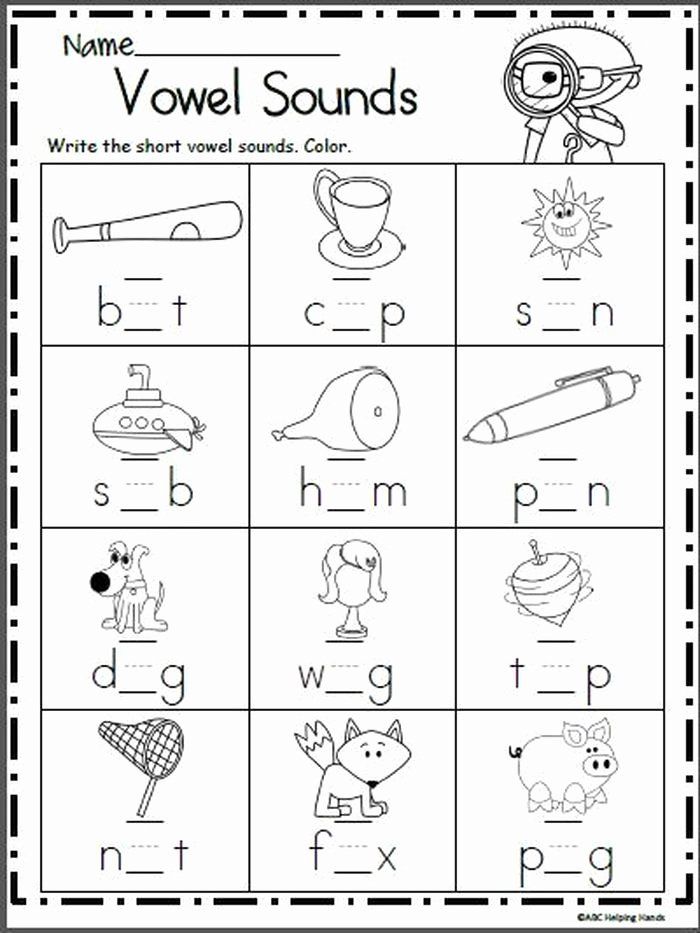 These vowels are not short and long versions of each other.
These vowels are not short and long versions of each other.
They're completely different vowels
If you stretch out an "a" as in cat, you don't get an "a" as in paper.
"A" as in "cat" is a low front pure vowel, and "a" as in paper is a diphthong (two vowels run together) which moves from low to high in the front of the mouth.
The same goes for the other "short-long" pairs. The long" vowel "e" as in "be" is a pure vowel, but "i" as in "find" and "o" as in "go" are both diphthongs.
The sound "u" as in "human" is actually a consonant-vowel combination ("y" as in "yes" plus "u" as in "hula"), which makes sense of the spelling of "you", but not most of its other spellings. Which part of the letter "u" in "human" is representing the "y" sound, and which part the "ooh"? For learning-spelling purposes it's counterproductive to slice it so finely. However, children will often hear the "y" and want to write it, and teachers need to know that it's not a figment of childish imaginations, there really is a "y" sound in "new" (unless you speak American English).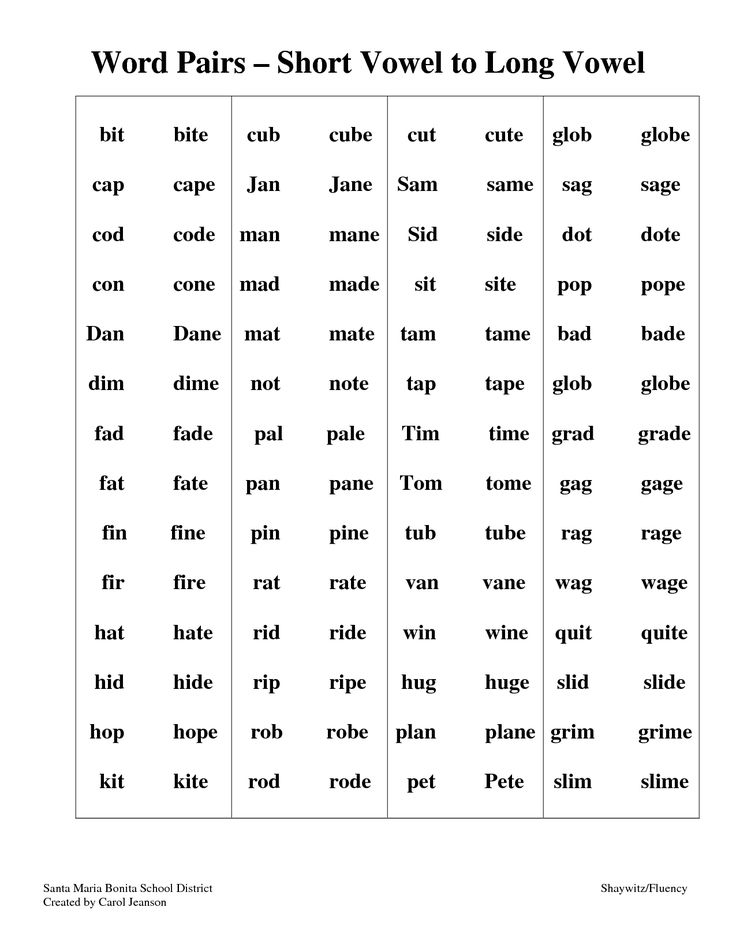
Why people think "short" vowels are short
The "short" vowel sounds cannot occur at the end of a syllable in English. They must be followed by a consonant.
In linguistics, they are called "checked" vowels. We actually have six of them, the other one being "u/oo" as in "put" or "good".
Since we only have five vowel letters, but we have 20 vowel sounds, we have to use syllable position and letter-combining to get a bit of clarity around which sounds we mean.
Often we use vowel combinations like ai, ee, ea, ie, oa, oo, oe and ue.
Often we use a vowel plus a letter Y, W, R or L, as in ay, ey, oy, aw, ew, ow, ar, er, ir, or, ur, and sometimes al (as in calm or walk) and ol (as in yolk).
The letters Y, W, R and L otherwise represent consonants that are quite open and vowel-like.
Well, actually, the letter Y by itself is almost always a vowel spelling (as in "by", "baby" and "gym"), but not at word beginnings, where people writing "X is for xylophone" type alphabet books tend to focus.
A doubled consonant letter (ff, ss, ll, zz etc) usually indicates that the vowel before it is a "short" vowel, i.e. it's not an open syllable, it ends with a consonant (as per the "capped-caped" etc example above).
What about the other vowels?
In the dialect I speak, there are twenty vowel sounds, not ten. The missing-in-action ones in the five-short-five-long classification are:
- "oo" as in "good", "put", "could", "wolf".
- "ooh" as in "moon", "flute", "chew", "soup", "hula", "blue", "fruit", "to", "lose", "shoe", "sleuth". This tends to get lumped in with "long u" as it shares some spellings and is one of the two sounds in the letter name U ("y" + "ooh").
- "ar" as in "car", "pass", "calm", "heart", "are", "baa", "aunt", "galah" and "clerk".
- "er" as in "her", "first", "nurse", "works", "early", "journal", "were", "masseur" and "myrtle".
- "aw" as in "for", "saw", "more", "all", "launch", "four", "warm", "door", "walk", "bought", "caught", "board", "dinosaur", "broad", "sure" and "awesome".
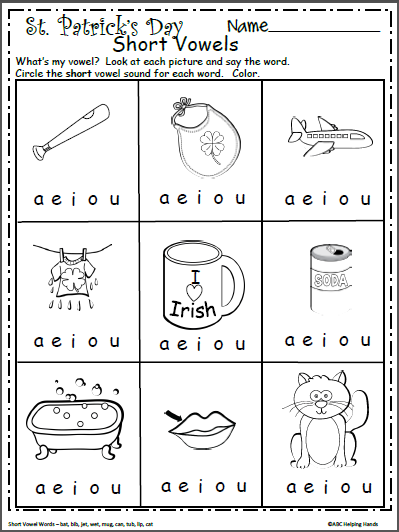
- "ou" as in "loud", "cow", "drought", "Maori", "sauerkraut" and "miaow".
- "oy" as in "boy" and "coin".
- "air" as in "care", "hair", "there", "bear", "parent", "aeroplane", "millionaire", "their", "prayer" and "mayor".
- "ear" as in "deer", "hear", "fierce", "here", "bacteria", "weird" and "souvenir".
- The unstressed vowel in words of more than one syllable, or unstressed grammatical words like "a" and "the", which can be spelt using any vowel spelling. Think of the last syllable in "butter", "actor", "collar", "sofa", "centre", "flour", "tapir", "murmur" and "picture". As long as children get a solid grounding in the other vowel spellings, they can then use this knowledge to tackle the unstressed vowel, and in their "spelling voice" say "buttER", "actOR", "collAR" etc. There is no need to teach the unstressed vowel as a separate Thing, like this (this is from a THRASS chart):
If the other 19 vowel sounds and their spellings are not all taught systematically and well, expect some students to have a lot of trouble spelling the unstressed vowel. It's what signwriters get wrong all the time.
It's what signwriters get wrong all the time.
Adults can use the terms "short vowel" and "long vowel" among ourselves if we like, but I don't think it's helpful to teach this misleading and confusing terminology to children.
Instead, we can just say the sounds ("the sound ay", "the sound oy" etc) and teach children all the main spelling patterns for each sound, systematically and explicitly, before the end of their third year of schooling. This will be extremely bad for my business, but hey, the people at school will be among the ones giving out pills in my nursing home. I want them literate.
« Reorganising high-frequency word lists
Learn About English Short Vowel Pronunciation — Pronuncian: American English Pronunciation
What makes a sound a short vowel?The term short vowel is used to refer to the sounds that most often correspond to the letters 'a,' 'e,' 'i,' 'o,' and 'u' when the vowel occurs individually between consonants (Consonant-Vowel-Consonant, or CVC pattern).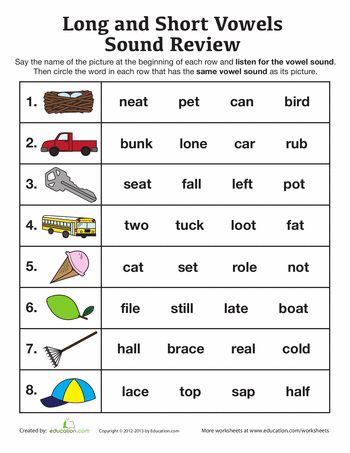 It is important to note that the term short is not referring to the length of time the vowel sound is pronounced—it is merely a label.
It is important to note that the term short is not referring to the length of time the vowel sound is pronounced—it is merely a label.
When learning the common spellings of vowel sounds, note that long vowels--not short vowels--often have a silent 'e' at the end of a word (see the long vowel VCe pattern).
Listen to the following sounds and words for to become familiar with pronouncing these challenging sounds.
short a /æ/: cat /kæt/ (pronounce it, spell it, practice it)
short e /ɛ/: bed /bɛd/ (pronounce it, spell it, practice it)
short i /ɪ/: sit /sɪt/ (pronounce it, spell it, practice it)
short o /ɑ/: top /tɑp/ (pronounce it, spell it, practice it)
short u /ʌ/: sun /sʌn/ (pronounce it, spell it, practice it)
The Consonant-Vowel-Consonant (CVC) patternAll of the short vowel key words use the Consonant-Vowel-Consonant (CVC) pattern.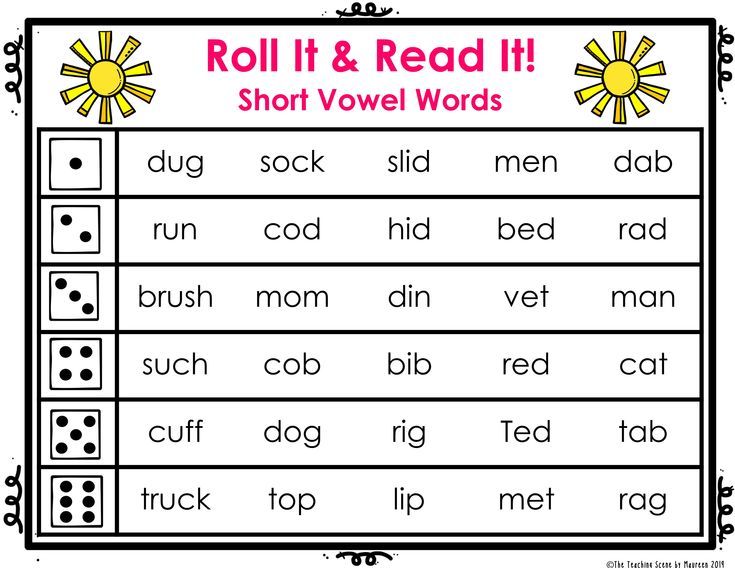 The CVC pattern states that when a single vowel is between two consonants, the vowel is pronounced as a short vowel sound (if the letter 'e' follows the second consonant, the vowel will be pronounced as a long vowel sound due to the Vowel-Consonant-e pattern).
The CVC pattern states that when a single vowel is between two consonants, the vowel is pronounced as a short vowel sound (if the letter 'e' follows the second consonant, the vowel will be pronounced as a long vowel sound due to the Vowel-Consonant-e pattern).
Additionally, when a vowel is pronounced with a short vowel sound, it may be followed by two consonants. Both consonants are not necessary for short vowel identification purposes, but do often offer an additional clue that the particular sound in that instance is a short vowel sound.
The CVC pattern still applies when a word begins with a vowel sound and is followed by one or more consonants.
Consonant-vowel-consonant spelling examples
short a /æ/: back /bæk/, at /æt/
short e /ɛ/: bend /bɛnd/, end /ɛnd/
short i /ɪ/: sick /sɪk/, it /ɪt/
short o /ɑ/: lock /lɑk/, opt /ɑpt/
short u /ʌ/: such /sʌʧ/, us /ʌs/
It must be remembered when applying spelling patterns to English pronunciation there is the possibility that two or more pronunciations may have the same spelling.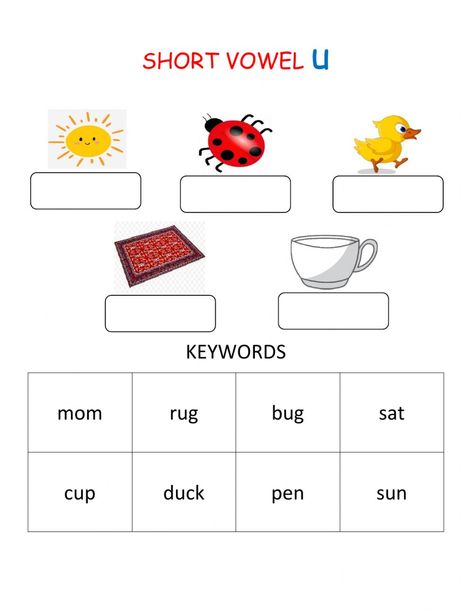 For instance, when the letter 'o' is between two consonants there are three potential pronunciations: 'short o' (top), 'long o' (most), and 'aw sound' (dog). Consulting a dictionary is the only way to be certain of the pronunciation of an unfamiliar word.
For instance, when the letter 'o' is between two consonants there are three potential pronunciations: 'short o' (top), 'long o' (most), and 'aw sound' (dog). Consulting a dictionary is the only way to be certain of the pronunciation of an unfamiliar word.
Long and short vowels in English
Longitude is one of the characteristics of a vowel sound, which shows the relative duration of its sound compared to other sounds.
Longitude can be positional and phonemic. In the first case, the duration of the vowel depends on the position in the word and stress, while this characteristic does not affect the meaning. The phonemic length of a vowel has a semantic function, that is, depending on the length of the sound, the meaning of the word changes. nine0003
Length of vowel sounds in English
In Russian, the length of vowel sounds does not affect the meaning of words and changes only depending on stress. In English, vowels differ not only in positional but also in phonemic length.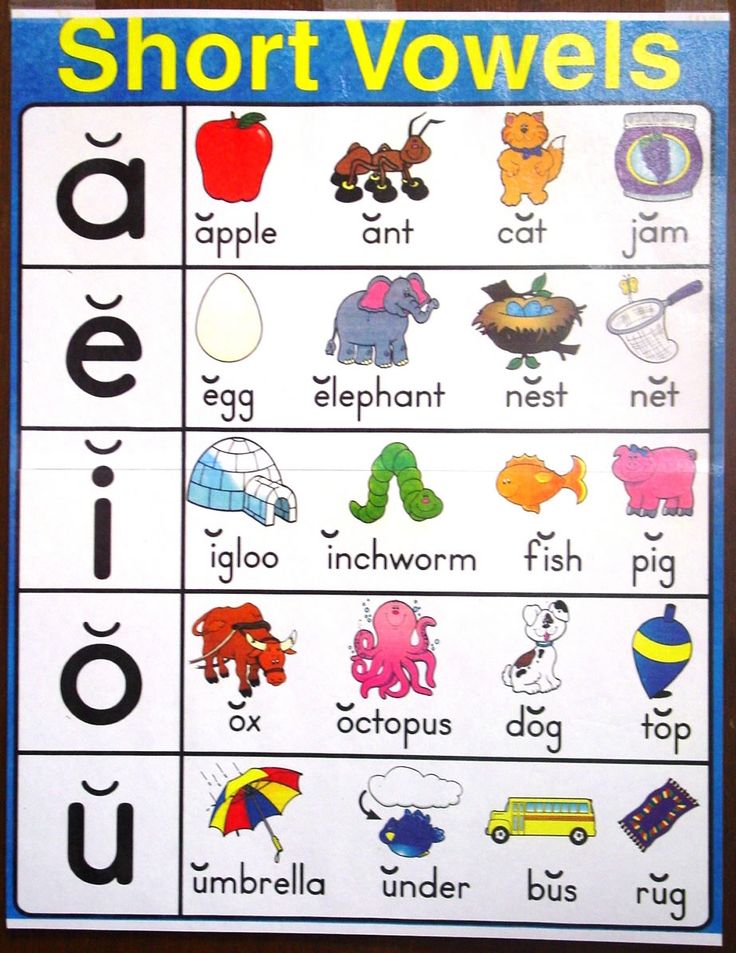 This means that long and short sounds, similar in other characteristics, represent different phonemes. Words that differ only in these phonemes have different meanings: ship - sheep , fit - feet , pull - pool . Therefore, it is so important to pronounce long and short sounds correctly.
This means that long and short sounds, similar in other characteristics, represent different phonemes. Words that differ only in these phonemes have different meanings: ship - sheep , fit - feet , pull - pool . Therefore, it is so important to pronounce long and short sounds correctly.
In transcription, long vowels are indicated with a colon: [i:], [α:], [ɔ:], [u:], [ә:]. In some cases, long vowels in an unstressed position are reduced and become semi-long, which in transcription is indicated by one dot from above: [α ].
The long vowels listed above are opposed to short vowels, forming the following pairs in English:
- [i:] - [ı]
- [uː] - [u]
- [ɔ:] - [ɒ]
- [α:] - [ʌ]
- [ә:] - [ə]
The pronunciation of long and short English vowels often causes difficulties for Russian learners of English, since in Russian vowels do not have phonemic longitude, and we are not used to distinguishing the length of a vowel sound by ear.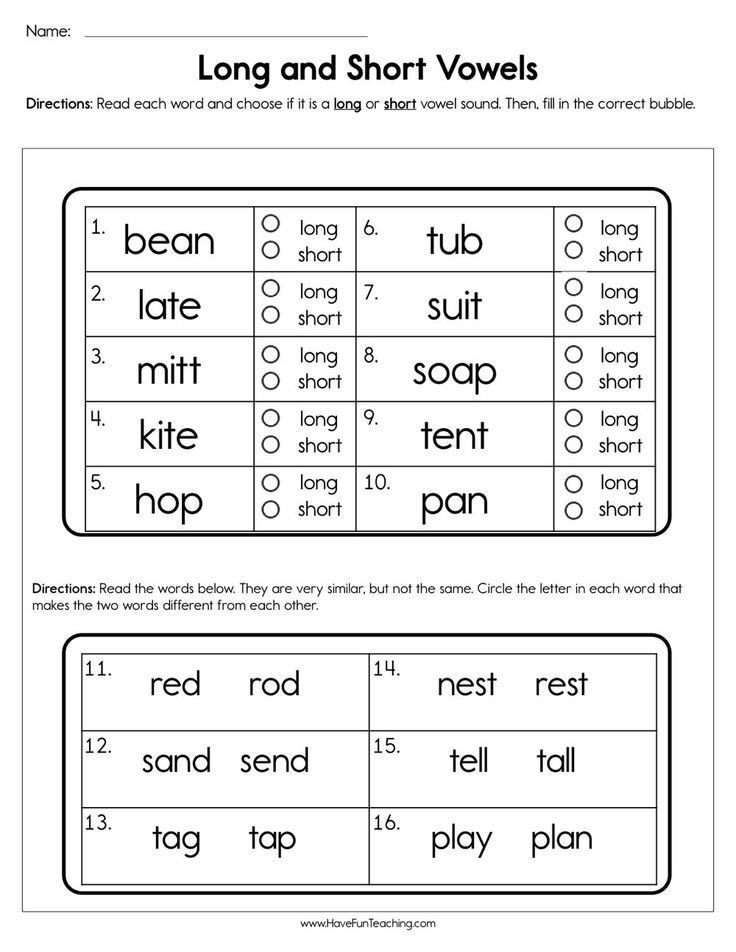 We often do not hear the difference between long and short vowels when listening to English speech. It is still not clear how long you need to draw a sound when speaking, so very unnatural, or almost inaudible, or too long vowels are obtained. It is impossible to correctly pronounce short and long sounds so that a native speaker hears the difference, even if you diligently shorten short vowels and stretch out long ones. nine0003
We often do not hear the difference between long and short vowels when listening to English speech. It is still not clear how long you need to draw a sound when speaking, so very unnatural, or almost inaudible, or too long vowels are obtained. It is impossible to correctly pronounce short and long sounds so that a native speaker hears the difference, even if you diligently shorten short vowels and stretch out long ones. nine0003
Sometimes it seems that native speakers themselves do not know the difference between short and long sounds, they seem to pronounce them the same way - but they themselves understand each other. But it's not. Let's see what are the differences between long and short English vowels, how to learn to hear them and how to train their pronunciation.
Differences between long and short English sounds
It is logical to assume that if vowels are called long or short, they differ in sound length. This is the main difference between them, but not the only one.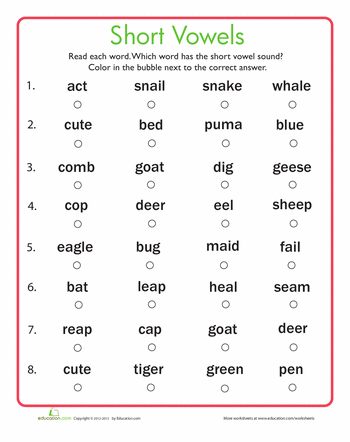 It is important to understand that long and short sounds have other differences, which consist in articulatory features. This means that the sounds are not just of different lengths, they are also different in sound. And most often it is these articulatory features that determine the length of the vowel sound: the duration of the sound depends on the position of the tongue and the tension of the vocal apparatus. nine0003
It is important to understand that long and short sounds have other differences, which consist in articulatory features. This means that the sounds are not just of different lengths, they are also different in sound. And most often it is these articulatory features that determine the length of the vowel sound: the duration of the sound depends on the position of the tongue and the tension of the vocal apparatus. nine0003
Long and short English vowels differ in such a characteristic as tension. Long vowels are tense, in English they are also called tense . When they are pronounced, the root of the tongue seems to be tense, under tension. The sound is pronounced, bright, rich, clear.
Short vowels are called lax – relaxed. The tongue in the region of the root is relaxed, the vowel sound is articulated quickly, easily, without additional effort, as if bursting. It turns out short, inconspicuous, faded and fuzzy. nine0003
Qualitative differences in sounds in different pairs of English vowels range from pronounced to almost imperceptible.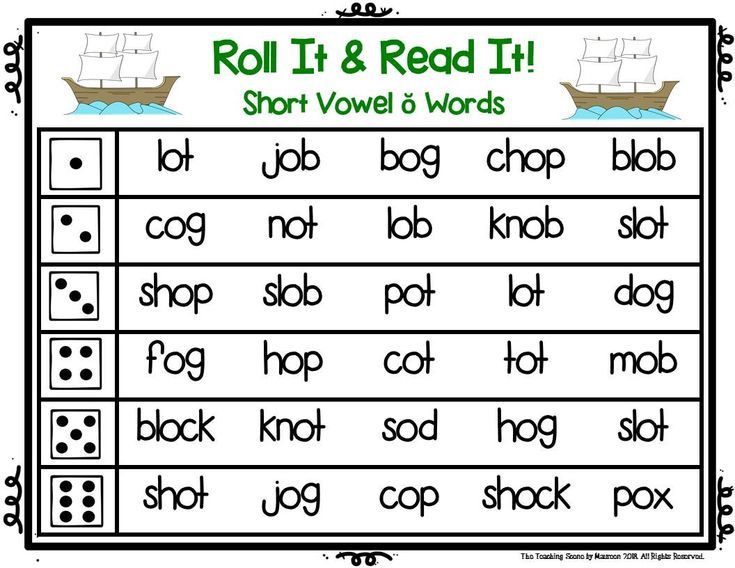 It is easy to notice the difference between long and short sounds a: pay attention to how the words cart and cut are pronounced, they differ not only in duration, but also in sound. But the differences between long and short u are almost imperceptible: pool and pull sound very similar, only slightly different in length. The Scots generally pronounce them the same way, differing only in context. nine0003
It is easy to notice the difference between long and short sounds a: pay attention to how the words cart and cut are pronounced, they differ not only in duration, but also in sound. But the differences between long and short u are almost imperceptible: pool and pull sound very similar, only slightly different in length. The Scots generally pronounce them the same way, differing only in context. nine0003
In addition, the duration of the pronunciation of vowels is also affected by positional longitude - for example, stressed or unstressed position in a word. As a result, a short vowel sound in one word may sound longer than a long sound in another word.
Thus, it is not enough to rely only on the subjective duration of a vowel sound. All the features of short and long vowels described above must be taken into account when learning English. It remains to understand how to master the pronunciation of long and short sounds in practice. nine0003
nine0003
How to learn to pronounce long and short English vowels
The main mistake foreigners make when pronouncing long and short English sounds is focusing only on duration. But with this approach, it is intuitively incomprehensible where the boundary between a long and a short sound passes: you can’t measure the length of a sound with a stopwatch. When trying to artificially lengthen or shorten a vowel, the sounds are unnaturally short or drawn out. nine0003
To learn how to pronounce long and short English sounds, you need to forget about the usual terminology "long" and "short". Try not to think about the duration of the sound at all. To correctly pronounce long and short vowels, you need to focus on their articulation, and not on duration. If we correctly reproduce the pronunciation of the vowel, then the duration will turn out to be correct automatically. Remember that long vowels require more tension at the root of the tongue, while short ones are pronounced without additional effort, easily and without tension. nine0003
nine0003
Pay attention to how native speakers pronounce vowels - don't watch how long they draw them out, but watch the pronunciation, the articulation, the quality of the sound. Repeat, imitate, practice. For practice, it is best to use video lessons or a conversation with a native speaker, since audio materials do not make it possible to see articulation.
It is best to train long and short sounds not separately, but as part of words. First, this way you will note the influence of positional longitude on the duration of the sound in specific examples. Secondly, just as words are best learned in context, sounds are also best learned in the environment. nine0003
Practice pronunciation of long and short vowels in pairs of words to notice the difference between sounds, for example:
- Sport – hot
- Arm-cut
- See-hit
- Food-put
- Fur – ago
When you learn how to pronounce long and short vowels correctly in English, it will become easy to distinguish between them in speech.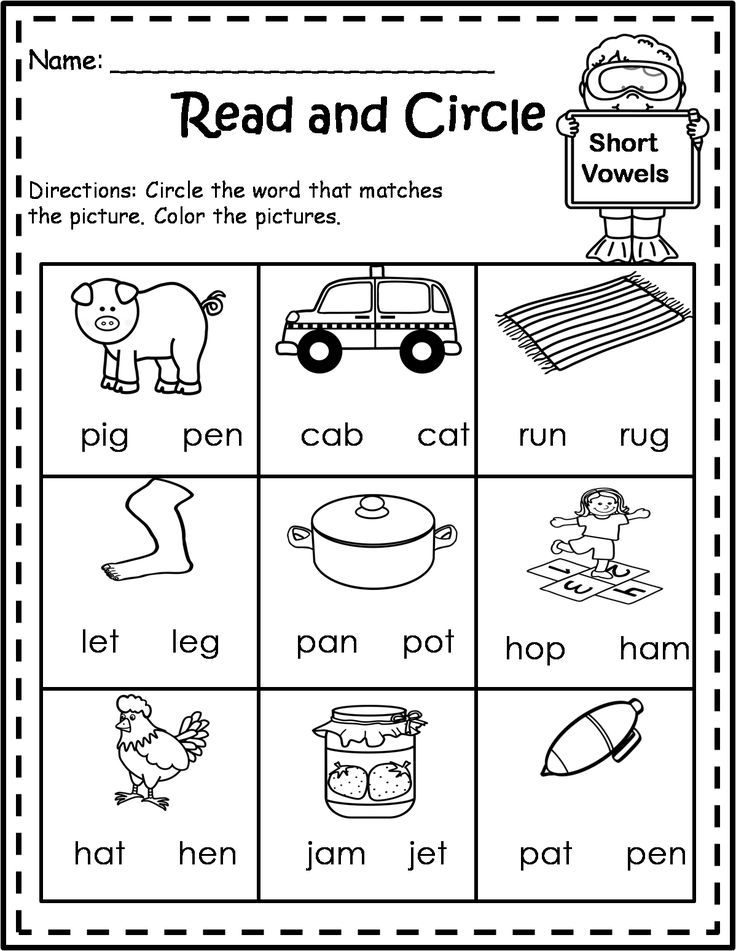 When listening to speech, forget about the differences in duration, pay attention to the qualitative differences in sounds - how intensely the vowel is pronounced, how bright or faded it sounds, how pairs of sounds differ from each other, except for duration. nine0003
When listening to speech, forget about the differences in duration, pay attention to the qualitative differences in sounds - how intensely the vowel is pronounced, how bright or faded it sounds, how pairs of sounds differ from each other, except for duration. nine0003
Task No. 5 OGE. Spelling analysis
December 2, 2021
Bookmark
Discuss
Complaint
TG 4USE
Trial work of the OGE in the Russian language
16 tasks for independent work with answers.
orfografiya.docx
Indicate the answers that give the correct explanation of the spelling of the highlighted word. Write down the numbers of these answers.
1
1) TELL - at the end of the prefix, before the letter denoting a voiceless consonant, the letter C is written. adjective.
3) TOUCH - the spelling of an unstressed alternating vowel in the root of a word depends on its lexical meaning.
4) (gray) CLOUDS - in the plural form R. p. of a noun, after the hissing letter b is not written. nine0147 5) (explained) IN GERMAN — the adverb is written with a hyphen, because it is formed from the stem of the adjective with the prefix PO- and the suffix -И.
2
1) DID— The prefix is unchangeable.
2) BEE (bite) - in the suffix -IN- of denominative adjectives, one -Н- is written.
3) STOP (from fear) - the spelling of an unstressed alternating vowel in the root of the word depends on the suffix that follows the root.
4) (ripe) RYE - in the names of nouns of the 1st declension, the letter b is written after the hissing. nine0147 5) ARRIVAL (to the station) - The prefix is assigned in the meaning of incompleteness of the action.
3
1) (blond) scythe - the spelling of an unstressed alternating vowel at the root of the word depends on the stress.
2) (notebooks) CHECKED - one -Н- is written in the suffix of short participles.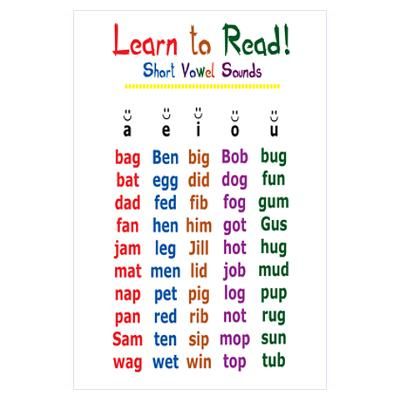
3) LEAN - the spelling of an unstressed alternating vowel in the root of a word depends on the stress.
4) (strewn) COMPLETELY - at the end of adjectives after the hissing letter b is written.
5) (snow) WHITE-WHITE - compound adjectives formed by repeating the same words are written with a hyphen. nine0003
4
1) SCREAMED - at the end of the prefix before the letter denoting a dull consonant, the letter C is written
- spelled -НН- at the junction of morphemes.
3) FILL (bed) - the spelling of an unstressed alternating vowel in the root of the word depends on the meaning.
4) (coffee) HOT - at the end of short adjectives after the hissing letter b is not written.
5) (turned to) SOUTH-EAST - compound adjectives formed by the repetition of words are written with a hyphen. nine0003
5
1) TEUSHENKA – in verbal nouns, after hissing, Y is written.
3) (beautiful) ZAGAR - the spelling of an unstressed alternating vowel in the root of the word depends on the suffix.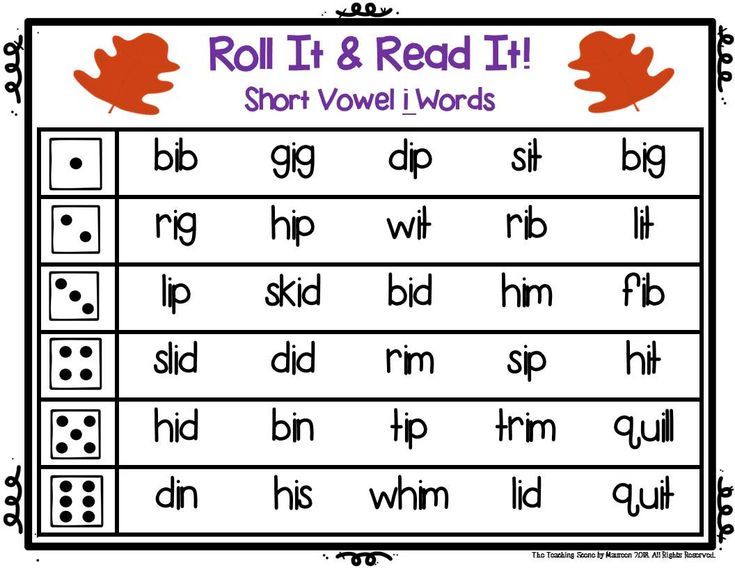
4) GERMAN - in adjectives formed from nouns with a base on C, the suffix K is written.
6
1)) DIP (pen into the inkpot) - the spelling of an unstressed alternating vowel at the root of the word depends on the lexical meaning of the root.
2) LEFT - the suffix A is always written at the end of the adverb
3) ZARYA - the spelling of an alternating vowel fundamentally depends on the stress
4) NIGHT - b is written after the hissing of nouns of the 3rd declension
5) He SPEETS - in the personal ending of verbs II conjugation is written E.
7
nine0147 2) POL-LEMONA - a noun with the first part POL is written with a hyphen if it starts with L.
3) PUT (in place) - the spelling of an unstressed alternating vowel in the root of the word depends on the suffix.
4) ENTRY - dividing Ъ is written after a prefix ending in a consonant before iotized vowels.
5) WOODEN - in an adjective formed from a noun using the suffix YAN, it is written НН
8
1) (enter into) BUILDING - at the end of the prefix, before the letter denoting a voiced consonant, the letter З is written.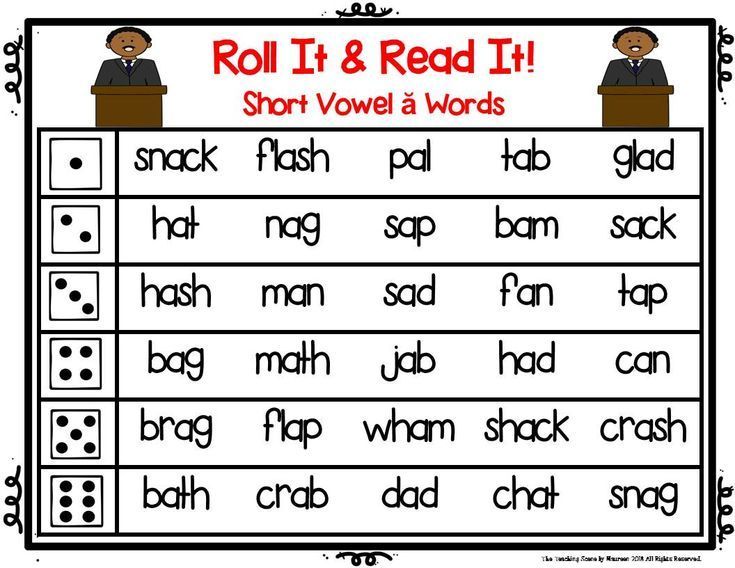
2) SWIMMER - the spelling of an unstressed vowel is determined by the selection of a single-root word.
3) (made) IN A NEW way - the adverb is written with a hyphen, because it is formed from the stem of the adjective with the prefix PO- and the suffix -OMU.
4) PAINTED (shop) - in full adjectives with the suffix ENH, always write HH.
5) DOCTOR - in the endings of nouns after hissing under stress, O is written
9
0147 (far) NOT INTERESTING (book) - NOT written separately with participles, if there are words dependent on the participle.
2) (girl) RUMIANA - the same number of -Н- is written in the adverb as in the word from which it is formed.
3) NOT LOOKING (under the feet) - NOT with gerunds used without NOT, is written separately
4) (house) UNDER CONSTRUCTION - in the participle formed from the verb I of the conjugation, the suffix -YASH- is written.
5) TWO-LEVEL - dividing Ъ is written in a compound word after the initial parts of two / three / four before iotated vowels.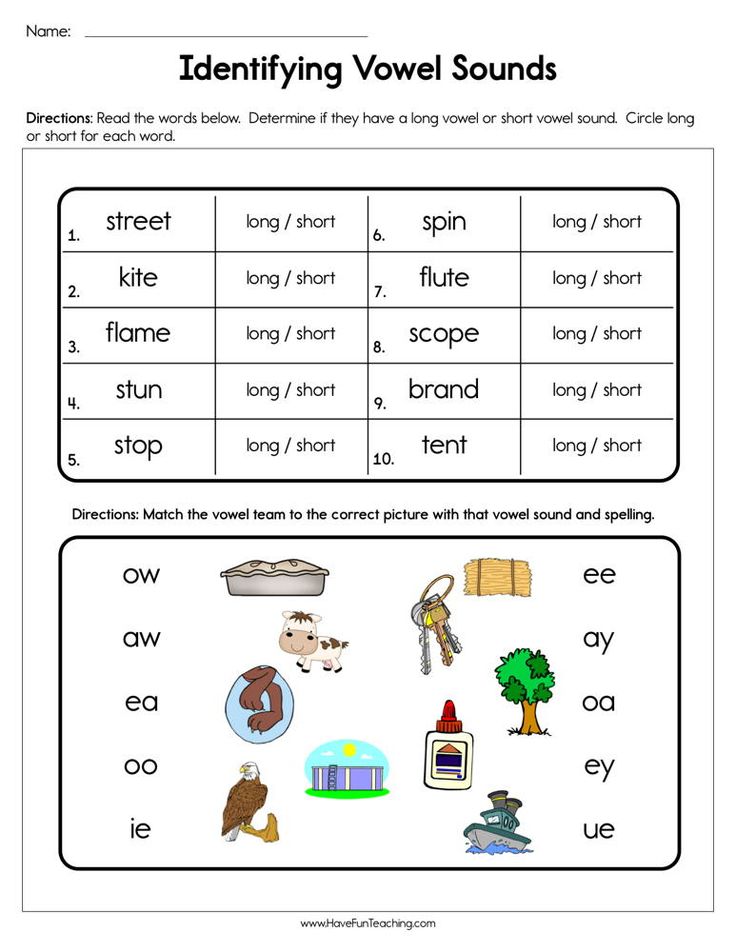 nine0003
nine0003
10
1) USELESS - at the end of the prefix, before the letter denoting a voiceless consonant, the letter C is written.
3) In the AQUARIUM - in the form of the dative case of the singular of the noun of the 2nd declension, the ending -E is written.
4) (covers) TRIM - in 3rd declension nouns, the letter b is written after the hissing.
5) (ate) HALF-BERRIES — words with HALF- are always written with a hyphen. nine0003
11
2) COVERED (with a blanket) - in the suffix of a short adjective, -N- is written.
3) ROSTOV - the spelling of an unstressed vowel at the root of the word is explained by an exception to the rule on alternating roots.
4) DEPENDS - in the unstressed ending of the verb I of the conjugation, I is written.
5) NIGHT - in the combination CHN, the letter b is not written.
12
1) FOR (days) - the letter E is written at the end of the derived preposition.
2) SAVE - at the end of the verb in the imperative mood, after the hissing, the letter b is written.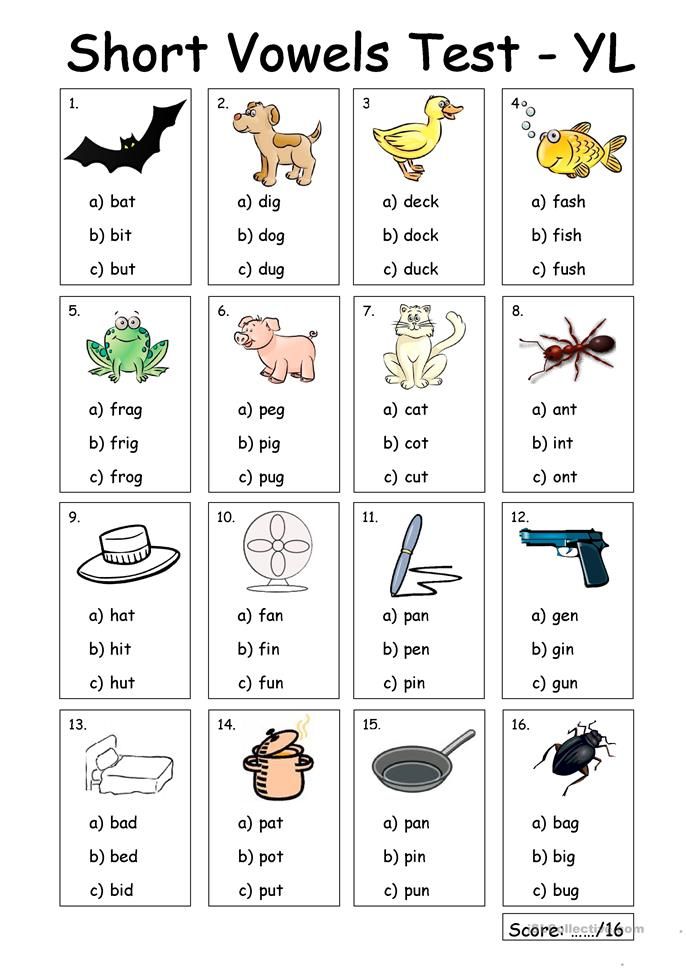
3) HOT (to give thanks) - at the end of adverbs, after hissing under stress, the letter O is written.
4) UNNAMED - after the Russian prefix ending in a consonant, the letter Y is written.
5) (subject) STUDYED - in the suffix of the short passive participle of the past tense, one letter H is written.
13
nine0147 2) HEARING - the spelling of the vowel A in the suffix of the real participle of the present tense is determined by belonging to the II conjugation of the verb, from the stem of which this participle is formed.
3) Frightened (child) - in the full passive past participle of the perfect form, it is written НН.
4) KALACHOM – in the suffix of a noun, the letter O is written under stress. nine0003
14
2) SLOWLY (pronounce) - in the adverb for -o, as many letters H are written as in the word from which it is formed.
3) STRONGLY STRONGLY (learn) - an adjective, written with a hyphen, because it is formed by adding bases with the same root.
4) REED - in the noun of the 3rd declension, the letter b is not written after the hissing ones.
5) (approach) SOMEONE— the indefinite pronoun is written with a hyphen, because words with the suffix -OR- are written with a hyphen. nine0003
15
1) CHICKEN - at the root of the word, the spelling of the letter Y after C is not determined by the rule (is an exception)
2) SKIERS - the letter Y is written at the end of a noun after C.
3) SUMMARY - after the Russian prefix ending in a consonant, the letter Y is written.
4) UNSUCCESSFUL - the adjective is written together with NOT, because the word is not used without NOT.
5) SUCCESS - the spelling of the prefix is determined by its value, close to the value of the prefix re-. nine0003
16
1) PALE YELLOW - complex adjectives that denote shades of color are written with a hyphen.
2) MOW (grass) - at the end of the prefix, before the letter denoting a deaf consonant, the letter C is written.